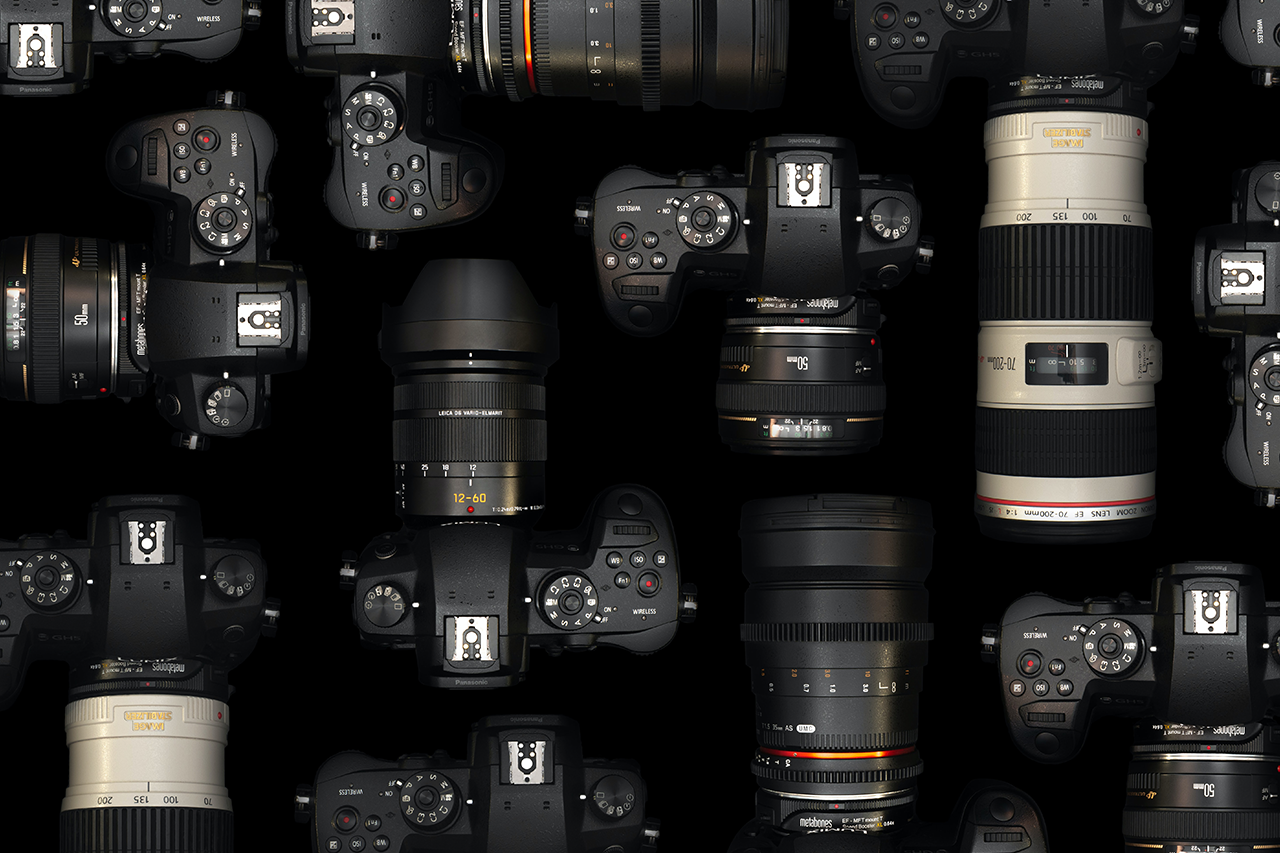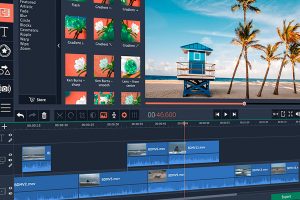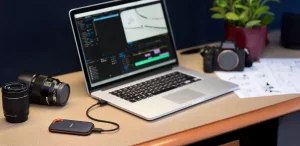Ever since the start of the pandemic production budgets were slashed due to the pandemic. While there was no upside for the film industry, it did give manufacturers and engineers adequate time to focus on releasing their new products without the distraction of product releases. So, rolling into a new year, cinematographers can expect the best quality products at their fingertips. Our top ten brands include Sony, Canon, Blackmagic, Panasonic, and Z Cam. While you may not be surprised with the lineup of manufacturers, it’s what’s inside each of their ‘new’ releases that have got the whole industry talking. To kick things off, we start with the Sony FX6, our best pick for 2022.
The Best Top 10 Cameras for Filmmakers
Blackmagic Design URSA Mini Pro G2
Blackmagic Pocket Cinema Camera 6K
Sony FX6
The Sony FX6 is designed for cinematographers who want the highest quality camcorder at an affordable price. Featuring a dual image processing engine, footage can be stored and read at high speed due to the incredible processing power. Additionally, filmmakers can use a myriad of lenses (mainly Sony E-mount lenses), which offer wide-area autofocus and use on-sensor phase-detection for precise focus.
The FX6 contains a built-in electronic variable ND filter which differs from conventional optical ND filters. The advantage is control: unlike a standard optical ND filter, the FX6 can be controlled from 1/4ND to 1/128ND linearly, or set to automatic. This fine-tuning caters to rapid change during different lighting environments, and the result is the ability to maintain the depth of field without overexposure.
These features, combined with recording at 4K in slow motion speeds up to 120fps, make the Sony FX6 top our list of most desirable camcorders on the market.
Sensor size: Full Frame
Sensor Resolution: 10.2MP
Max shooting resolution: 4K
Card Slots: CF express Type A / 2x SD card
Pros
· 4K 120fps
· Dual cards slots
· 10-bit 4:2:2 recording
Cons
· No 8K recording functionality
· Focus breathing with select E-mount lenses
· No in-body image stabilization
Canon EOS R5 C
Canon has taken their Canon R5 flagship digital mirrorless camera and bolstered its performance with serious videography upgrades. The Canon EOS R5 C is a true hybrid camera designed to meet the needs of pro photographers and those of serious videographers. The R5 C takes on a much bigger form than the original R5 allowing Canon to include a built-in internal cooling fan system and airflow management.
Running on the built-in high-capacity battery, the Canon EOS R5 C captures full 8K video at 30p. The R5 C steps up above all other hybrid videography and photography cameras by also offering 8K at 60p internal video recording – provided that the camera is powered by the optional direct power cord and adaptor. Another standout feature of the full-frame digital mirrorless camera is the ability to conduct simultaneous RAW recording to the dual cards for guaranteed backup.
The small form factor of this camera makes it ideal for location filming, for example capturing stock videos of nature or cities.
Sensor size: Full Frame
Sensor Resolution: 45 MP
Max shooting resolution: 8K
Card Slots: CF express Type B / 2x SD UHS-II Card
Pros
· 8K 60fps
· Dual card slots
· Hybrid photography/videography camera
Cons
· 8K 60fps dependent on an external power source
· No full-sized HDMI port
· No built-in ND filters
Blackmagic Ursa Mini Pro 12K
Coming close to the top of our list is Blackmagic’s first entry in the top 10. While the camcorder features an impressive 12K of shooting resolution at 60fps, it does let itself down when it comes to the quality of the footage. Unfortunately, we see some noise issues when shooting at the native ISO 800, and moiré is present when repeating patterns are filmed.
Aside from these two letdowns, the Ursa Mini Pro 12K is a camcorder you will fall in love with. The fact that you can record at an extreme res (12,288 x 6480) using the Super 35mm sensor is warranted enough to make you go out and buy this camera. Adding to this, 14 stops of dynamic range will make any scene’s shadows and highlights pop. All in all, for a broadcast camera at an affordable price point, the Ursa Mini Pro 12K hits the mark.
Just ensure you make yourself aware of the Blackmagic accessories and aftermarket products available for this camera. For instance, third-party filters exist to fix the noise and numerous rigs to assist with image stabilization.
Sensor size: 27.03×14.25mm (Super35)
Sensor Resolution: 79.6MP
Max shooting resolution: 12K
Card Slots: 2x CFast 2.0 slots / 2 x SD UHS-II slots
Pros
· 12K 60fps
· Dual card slots
· PL, EF, and F lens mounts
Cons
· Moiré issue
· Noise when compressing footage
Canon EOS C300 Mark III
Canon has a long and accomplished history with its highly acclaimed Cinema EOS camera range. Considered the cinematic workhouse of the lineup, the EOS C300 Mark III was redeveloped to feature a Super 35 image sensor, 4k 120 high-resolution recordings, and modernized internal memory options. While the original Canon EOS C300 launched back in 2010, the Mark III is anything but aging, given it was made available in mid-2020.
Granted that newer entries in the Canon mirrorless lineup offer up to 8K 60p (a nod to the Canon EOS R5 C), they cannot compete with the purpose-built 9.6MP Super 35mm format image sensor. The Canon captures stunning slow motion at 12p with full-sensor 4K. In terms of design sensibility, the C300 III is a dream to work with thanks to its cube-form that pairs seamlessly with gimbals, rigs, monitors, and more.
Sensor size: Super 35
Sensor Resolution: 9.6MP
Max shooting resolution: 4K 120p
Card Slots: 2x CFexpress 2.0 Type B / 1x SD Card (UHS-II)
Pros
· 4K 120p – full sensor slow motion
· New Dual Gain Output Super 35 sensor
· Canon’s Cinema RAW Light
Cons
· Limited 4K recording
· Limited outputs
· Sloppy in-camera image stabilization
Blackmagic Design URSA Mini Pro G2
Like the Ursa Mini Pro 12K, the G2 boasts several features. However, the main reason it appears lower on our list of top 10 camcorders in 2022 is its maximum shooting resolution, which tops out at 4.6K. For many, this won’t necessarily be a game-changer in their decision to up their image quality because, let’s face it, there aren’t many 8K screens out there. With that being said, you can expect excellent dynamic range, built-in ND filters, 300 frames per second, interchangeable EF lenses (that can be swapped for optional PL, B4, or F mounts), and direct recording onto external disks.
Accessibility across the camera is set out to be quite ergonomic. There are the usual program, focus, and iris buttons, but something you may not be familiar with is the built-in ND filters. You can find the ND filter adjust wheel at the front of the camera, making filming a breeze in lighting environments with high contrast.
Overall, if you are looking to entertain Blackmagic as your style of choice, the G2 is worth considering; however, in our opinion, the money is better spent on the URSA Mini Pro 12K.
Sensor size: 25.34 x 14.25 mm (Super35)
Sensor Resolution: 4608 x 2592 (12MP)
Max shooting resolution: 4.6K
Card Slots: CFast x 2 / SDXC x 2
Pros
· 4.6K 120fps
· Dual memory card slots
· Built in ND filters
Cons
· Soft image quality that’s a little noisy
· Audio issues (firmware is supposed to fix this)
· No 8K recording capabilities compared with newer models
Panasonic Lumix BS1H
Thanks to its LUMIX range, Panasonic has firmly cemented its reputation as a developer of outstanding hybrid photography/videography camera systems. The Panasonic LUMIX BS1H bucks tradition and delivers a cinematography tool within a box-like form factor. The BS1H has borrowed heavily from the hybrid S1H to include additional ports, terminals, and no less than 11 heavenly ¼-20 thread mounts.
What’s most impressive about the Panasonic LUMIX BS1H is the staggering dual ISO full-frame 6K 24p / 5.9K 30p recording, along with the option of Super 35mm 60p. Just let that sentence sink in! The full-frame BS1H features an L-Mount to drop all that gorgeous Leica/Panasonic glass on. The cinematic powerhouse supports a single UHS-II SD card in terms of internal recording. While box-format cinema cameras are not a new design, the Panasonic BS1H takes the format to new heights thanks to intuitive functionality, power, and performance.
Sensor size: Full-frame
Sensor Resolution: 24.2MP
Max shooting resolution: 6K 60p
Card Slots:
Pros
· 6K 24p
· Super 35mm 60p
· Ample inputs, outputs, and threaded mounting points
Cons
· No in-body image stabilization
· Inaccurate and slow autofocus
· Limited L-mount lens options
Z Cam E2
If you aren’t a fan of box-style camcorders, then look away. The Z Cam E2 features 4K, recording up to 160 frames per second in a compact body. There’s also an optional cable that can sync dual cameras (up to 100) for bullet time or 3D capture if that’s not enough. Featuring a 4/3″ sensor, the quality you can output is exceptional. Offering 10-bit color support, which equates to 13 stops of dynamic range, you’ll be impressed when recording in ProRes. There are also the standard H.265 and H.264 codecs to play with when recording directly to a memory card or an external drive. Controlling the camera traditionally is ergonomically friendly (with multiple rig opportunities), or there is also the ability to control via the iOS app remotely.
It is easy to optimize the usability of the camera thanks to its compatibility with handheld rigs, cables, and power sources. Talking about power, thanks to Sony’s adoption and operability between different camera systems, the Z Cam E2 uses an L-series battery which is readily available in various sizes at affordable prices. All in all, the Z Cam E2 is a contender in our list of top 10 camcorders for 2022. Just because it may look different on the outside, you should never judge a camera by the cover!
Sensor size: MFT (Micro Four Thirds)
Sensor Resolution: 10.28MP
Max shooting resolution: 4K
Card Slots: 1x CFAST 2.0
Pros
· 4K 160fps
· Apple ProRes certified
· 13-15 stops dynamic range
Cons
· Low light performance
· Plastic door covers
Panasonic AU-EVa1 5.7K
Despite getting close to four years old, the Panasonic AU-EVa1 is a cinematic powerhouse thanks to its stunning 5.7K Super 35 performance, design sensibilities, and unique feature set. The AU-EVa1 can achieve a respectable 4K 60p via internal recording to the dual SD card slots. However, it shines when outputting to an external recorder in glorious 5.7K RAW. In this 4:2:2 output, users can record different codecs such as H.264 or MPEG-4 AVC High Profile.
When utilizing the camcorder for documentaries, events, or commercial use, you’ll find there’s enough latitude at native ISO of 800 to offer up to 14-stops of latitude. So if you find yourself in the edit suite needing a little more from this camera, it’s capable of giving you a bit more.
The camcorder itself is 1.2kgs without a lens, so if you plan to use it for hours on end, you may want to consider a comfortable rig. Our recommendation is to attach an external display capable of capturing V-Log at 10-bit 4:2:2 as the onboard screen doesn’t perform well in daylight conditions. With that aside, though, it doesn’t affect the output quality of this camera.
Sensor size: Super 35
Sensor Resolution: 20.5MP
Max shooting resolution: 5.7K 60fps
Card Slots: 2x UHS-Ⅱ SD Cards
Pros
· 4K 60fps
· Super 35 Sensor
· EF Lens Mount
Cons
· The LCD screen is hard to view in outdoor lighting conditions
· Autofocus is disappointing when compared to other models in the top 10
Canon EOS C70
Canon launched the Canon Cinema EOS C70 towards the end of 2020, making it a relatively new and advanced cinema camera option. Thanks to its impressive performance, capabilities, features, and ergonomic design, the Canon EOS C70 is hailed as a remarkable cinematography and videography camera. The DSLR-sized Super 35mm camera shoots up to 4K at 120p while sporting the popular Canon RF and EF lenses. As a result, cinematographers have a crazy range of lenses to choose from, including those ideal for vlogging, photography, and the Canon Cine range.
While the Canon EOS C70 is a more affordable alternative compared to its larger cine siblings, it is in no way a camera suited to beginners. It’s a pro-level cinematography tool with a full suite of video recording modes, outstanding low light performance, lighting fast focus speeds, and brilliant user interface. The maximum 4K shooting resolution makes the EOS C70 an ideal tool for vloggers and those solo cinematographers creating unique content. It’s the sort of camera that suits studio use just as much as those on the go.
With the introduction of the Canon EOS R5 C, those previously considering an EOS C70 now have to consider the best option. At the end of the day, the C70 offers glorious Super 35mm format but with the resolution capped at 4K.
Sensor size: Super 35mm
Sensor Resolution: 8.85MP
Max shooting resolution: 4K 120p
Card Slots: 2x SD Cards
Pros
· 4K 120fps
· It fits Canon RF lenses
· Excellent touch interface
Cons
· Lacks RAW recording
· No SDI outputs
· Low-quality LCD
Blackmagic Pocket Cinema Camera 6K Pro
If you have been looking at the Blackmagic Pocket Cinema Camera range, chances are you’ve seen the 4K and 6K cameras. Both cameras play their part in adopting new users into the cinema world. However, there are major differences between the two. For starters, the 6K Pro can record in 6K and adopts a new Sony-style battery that extends its life over previous Canon battery-operated models.
The camcorder is impressive for a small body. There’s a Super 35mm sensor built-in which pairs well with any of the Canon EF mount lenses. Turning your attention to the ergonomics, you’ll find the usual suspects of a Full-Size HDMI, USB-C, Mini XLRs (with Phantom Power) Mic In, Headphone Jack, Tilt Screen, and of course, a 12V Power jack for longer recording times.
Hand holding the Blackmagic Pocket Cinema Camera 6K Pro is a breeze thanks to its smaller body. However, we wouldn’t say no to a customized SmallRig, making filming so much smoother over a longer period. This additional mass is most likely necessary in the long run as you’ll probably be recording directly to an Atmos or similar external monitor.
Sensor size: Super 35
Sensor Resolution: 21.2MP
Max shooting resolution: 6K
Card Slots: 1x SD/SDHC/SDXC UHS-II / 1x CFast
Pros
· 6K 60fps
· Adjustable screen with 1500 nits of brightness
· Super 35 sensor
Cons
· Slight bluish cast on the rear LCD screen
· No continuous AF, AE, or IBIS
Cover Photo by Dan-Cristian Pădureț on Unsplash




